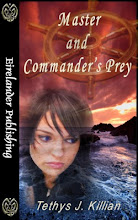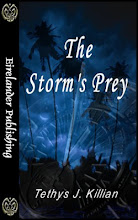Once you understand Impact Moments and how they relate to characterization, and have glued your characters to the story – it's time for the journey to begin. In Sci-fi and Fantasy, we take the Hero's Journey to extremes, because whenever you are working with a 'hard' plot, the change isn't just necessary, it's essential to the plot. Hard plots or what is known as Hard Sci-fi and Hard Fantasy, relates to the tales of Heinlein and Asimov, Tolkien and Norton. These are extreme plots with a lot of focus on world building, character building, and yes, the Hero's Journey.
I've received many questions on how the Hero's Journey works. Part of the problem with explaining how this works is because this term is almost always related to screenplay writing or 'hard' plot stories. It in no way should be taken the Hero's Journey can't be used in other genres or with a 'soft' plot.
The big thing is don't over-analyze anything unless you are going 'hard'.
First- and foremost – understand the Impact Moment. How will this moment effect your character? Will it change them minimally or will they be altered in a drastic way? Remember, the Impact Moment isn't always obvious to anybody except the author.
Second – make certain the glue is in place. You've given enough information to clarify who the character is.
Okay – the Impact Moment is the start point. From there the character will travel in a path, normally set down by the author, to its conclusion. This is where you have to determine the path. What is the character's mission.
If the mission is to find true love – the path will be only slightly bumpy. It might have a few twists and turns in it. This journey means, the character won't change drastically, though they may realize they were missing love in their life or something along those lines.
If the mission is to find a killer – the path will be much more complicated. The character's plot might be revenge, it might be that they find true love in the process, but adding the 'hard' plot of a mystery will steer the path all over the place.
The biggest problem authors run into is they never sketch out the path. They write a story by the seat of their pants then say, 'all done'. There is nothing wrong with flying through a first draft, but the fact is, once you have, you have to determine if the path is working for you. Does it make sense? Can you honestly believe your character would act the way they are during a scene or scenes in the story? Did you rush through a spot or try to work your way out of a corner you typed yourself into? If you did, does it now make sense.
Whenever a journey begins, it must have a conclusion. Is this conclusion jiving?
I'm a great proponent of write the story the way you write the story. I will never say there is a right or wrong way to write. What I will say, is if you are tackling the characters' journey, make sure you check the paths four or five times before saying 'all done'.
Do you have a different way of taking your characters on the ride of their lives? I'd love to hear it.
Until next time - cheers, and happy writing,
T.J.
Subscribe to:
Post Comments (Atom)





.jpg)
.jpg)






1 comment:
Very good post, T.J. It definitely isn't soemthing 'easy' to grasp, but once you do, you write in a whole new way.
I think the big pitfall most writers make is that they do not know their characters. Say, how you know yourself - you should know your 'people' this same way. Just as you know you wouldn't do this in such a situation, you should know what they too would or wouldn't do in a certain circumstance.
Also know what triggers them. What sends them off-loop? For example, your heroine will never jump a stranger's bones. But what if she's claustrophobic and ends up in blocked in an elevator with a hunky fella? Time passes, she finds she can breathe but only just. He helps her fight, and this creates a tension between them, and they share a kiss, which leads to more. The situation made her react this way, and that's what writers need to know about their characters.
My very clingy two cents!
Hugs
Z(Aasiyah/Nolwynn)
Post a Comment